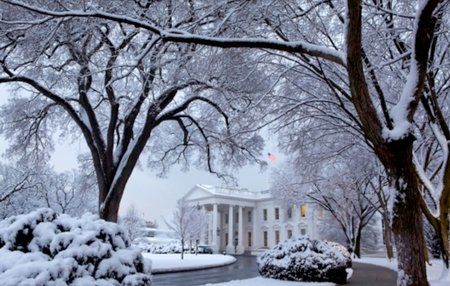Michael Steinberg, MPP, Staff Writer, Brief Policy Perspectives
One of President Trump’s first actions in office was to issue an executive order freezing the hiring of new federal employees. The order, which fulfilled one of his campaign promises, will be in place for an initial period of 90 days. After that,the directors of the Office of Management and Budget (OMB) and Office of Personnel Management (OPM) must submit a plan to the White House on how to reduce the federal workforce by attrition. Further, the order exempts military positions and national security positions, which represent more than one-third of federal employees.It also prevents agencies from circumventing the intent of the order by hiring outside contractors.
History has shown that hiring freezes don’t work. As the Government Accountability Office (GAO) found when the Carter and Reagan administrations tried to implement similar orders, across the board hiring freezes do not actually reduce the federal workforce and agencies easily find ways around the restrictions. More importantly, the report found that hiring freezes cost the taxpayers money and delay services for Americans. Because of workforce reduction and a lack of oversight personnel, enforcement of debt and loan payments at multiple agencies was delayed or left uncollected, and the uneven impact of the freeze caused inefficient utilization of staff.
Increased Costs and Delayed Services
Although the administration sold the hiring freeze as a maneuver to clean up Washington, the American taxpayers will ultimately suffer from this policy. As previous hiring freezes have shown, agencies will lose staff members that are critical to carrying out department missions and overseeing agency revenue and spending. Between 2010 and 2014, the IRS was forced to implement a hiring freeze to comply with budget restrictions imposed by sequestration. As a result, the agency workforce was reduced by 13,000 employees and roughly $2 billion was lost in revenue during FY 2014. Commissioner John Koskinen testified, “Essentially, the government is forgoing billions to achieve budget savings of a few hundred million dollars.”
Taxpayers will also suffer when critical services are delayed due to lower workforce capacity. As Social Security recipients found out after the massive budget cut and hiring freeze of 2011, a slimmer workforce increased the time it took to receive benefits and get help on the customer service hotline, while decreasing the number of appeal hearings granted. The issues were compounded by the fact that the number of social security claims increased dramatically over that period. Regardless of the administration in power, the people will continue to demand services from the government. Agencies need to have the capacity and efficiency to handle constituent requests.
Impact on Veterans and Millennials
The hiring freeze and subsequent workforce reductions will also disproportionately affect veterans and millennials. Despite promises to take care of veterans, the Administration’s implementation of the hiring freeze may impact employees at some VA hospitals, which are already struggled to keep up with demand. Furthermore, over 30 percent of new federal hires are veterans, and some have already lost job offers because of the order. Veterans have a hiring preference and are typically ideal candidates for the roughly 3,000 Department of Defense and 2,300 Department of Veterans Affairs vacancies at the start of Trump’s administration. Although the VA has been able to exempt many positions from the freeze, any reductions in the federal workforce will hurt veterans, putting them out of work and leaving them with subpar benefits from VA hospitals. As one VA employee noted in a recent Atlantic article, “It’s unethical to freeze things to the point where it’s not possible to provide services to veterans.”
Millennials would also be hurt by the reductions in the workforce because there is a strong likelihood that many will be discouraged from undergoing the federal hiring process. This means that the government could lose out on hiring top talent for cybersecurity and IT positions which are of critical importance given that many federal IT employees are nearing retirement eligibility age. Not filling these positions with millennials will leave the nation’s IT infrastructure vulnerable and out-of-date. Also, if fewer millennials join the federal workforce, they will miss out on the professional development opportunities and student loan forgiveness plans that come with federal employment.
Long Term Solutions Ignored
Republicans and Democrats alike agree that the federal hiring process needs to be changed and workflows for employees need to be made more efficient. Agencies can be reorganized or reduced through attrition, but this won’t solve the problems government employees face when performing their duties. Instead of making a political statement by freezing federal hiring, it would be more beneficial for agencies to increase training efforts for employees, reduce the length of the federal hiring process, and focus on how to best organize employees around agency missions.
Creating an efficient and effective civil service is a bipartisan issue, and by undertaking it, President Trump can send a clear message to his new employees that he wants to help them do their jobs better. If the new administration adopts reasonable civil service reforms that allow agencies to better assist the American people, then they will be rewarded for their efforts. The hiring freeze is short-sighted and should be rescinded in favor of long-term policy solutions that increase savings for taxpayers, facilitate services for veterans, meet the government’s IT talent needs, and reform the hiring process for civil servants.
